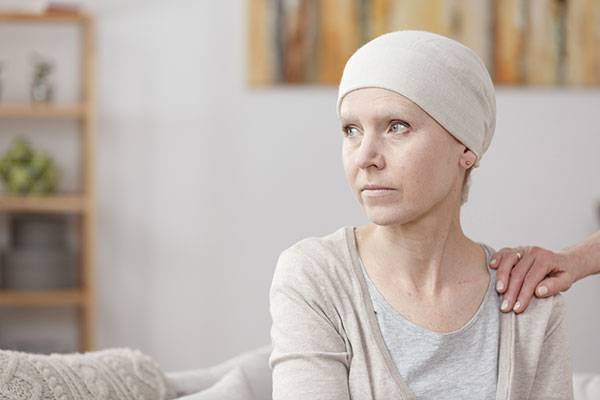common Cancers in women
A cancer diagnosis is often related to family medical history, lifestyle choices, or other environmental factors. Although your family history or living environment cannot be controlled, if you are prone to certain diseases, healthy lifestyle habits such as proper diet, regular physical activity, smoking control, and quitting are all under your control.
According to annual statistics, 852 to 630 women are diagnosed with various types of cancer, and about 282 to 500 of them are infected. They die, so it is essential to know the risk factors and learn to correct them.

Sometimes the cause of cancer is very trivial, but it is neglected, such as using sunscreen to prevent skin cancer. Doctors recommend that you talk to your doctor about risk factors based on your family history and lifestyle. Knowing what awaits you can go a long way in screening, lifestyle, and diet changes.
Cancers that most women get:
Breast cancer
Women One in eight people is at risk for breast cancer. Although there is no definitive way to prevent breast cancer and you are not responsible for many factors, knowing the most common risk factors below can help you deal with those who are not under your control.
Female gender
Breast cancer is about 100 times more common in women than in men.
Age
Two out of every three women with breast cancer are over 55 years old.
family history
If your mother, sister, or daughter has breast cancer, your risk is doubled if two of your close relatives are infected; your risk triples.
Gene
Between 5-10% of breast cancers are thought to be caused by specific genetic mutations. Berka one (brca1) on chromosome 17 and Berka Two (brca2) on chromosome 13 are the most common mutations associated with this disease.
race
White women are more prone to breast cancer than other races because their tumors may grow faster and appear more advanced.
Dense breast tissue
Fibrous and glandular tissue due to aging, menopause, certain drugs, pregnancy, and genetics are more than fatty tissue. It can double the risk of breast cancer and make it difficult to diagnose early cancers on mammography.
Previous chest radiotherapy
Women who have previously been treated for another cancer are at higher risk for breast cancer, especially if they have been treated during breast development.

Menstrual periods are above average.
The onset of menstruation before the age of 12 and the beginning of menopause after the period of 55 increase the risk of breast cancer
Non-pregnancy or late pregnancy (after age 30)
In general, these two factors increase the overall risk of breast cancer. However, pregnancy may increase the risk of specific subtypes of breast cancer.
Taking birth control pills
It seems that ten years after women stop taking birth control pills, the risk of breast cancer returns to normal.
Taking the therapeutic drug diethylstilbestrol
To prevent miscarriage, take this medicine once because it slightly increases the risk of breast cancer.
Postmenopausal hormone therapy
Avoiding this treatment reduces the risk of breast cancer.
No breastfeeding
Not breastfeeding may slightly increase the risk of breast cancer.
Overweight (especially after menopause)
Seeing a dietitian for diet modification can help you lose weight and your risk of cancer. Also, weight loss can lower estrogen levels.
Breast cancer is more common in obese people with an increase in estrogen.
Lack of exercise
This carries a risk of breast cancer, so if you are sedentary, set a goal for more activity.
Consume red meat
Meat consumption is linked to the disease, but researchers are still unsure whether it causes the disease. If you are at risk for breast cancer, include white meat and seafood in your diet.
Lung and bronchial cancer
Lung and bronchial cancers account for 12% of women and 25% of all deaths worldwide. The risk of lung cancer in women is 1 in 17. If you look at the mortality rate of people with this type of cancer, you will find that lung cancer is very deadly. Although breast cancer is more common in women than lung cancer, it is the leading cause of cancer death.
Interestingly, if people quit smoking, women’s lung cancer rate decreases to 80% and in men to 90%. According to the Centers for Disease Control and Prevention, smokers die of lung cancer 15-30 times more often than non-smokers. Family history also plays a vital role in the development of this cancer.
Other factors that increase the risk of lung cancer include:
- cigarette smoke
- Radon gas
- Asbestos
- Arsenic (inhaled or in drinking water)
- Diesel exhaust fumes
- air pollution
In addition to following a healthy exercise and diet plan, avoiding smoking also helps reduce the risk of lung cancer.
Colon cancer
Colon cancer accounts for 8% of all cancers and cancer deaths in women. The risk of developing this cancer in women is 1 in 24 people. While colon cancer can occur in young people and adolescents, it is most commonly diagnosed in adults 50 years of age or older.
According to the Clinical Cancer Society, the average age at which women get cancer is 72 years, and men’s average age is 68 years.
In addition to age, there are several other risk factors, some of which can be controlled, including:
- Personal or family history of colon cancer or polyps
- Having inflammatory bowel diseases such as ulcerative colitis or Crohn’s disease
- smoking
- A diet containing red or processed meat or low consumption of fruits and vegetables
- Overweight or obesity
- Type 2 diabetes
Early detection of this type of cancer can save a person’s life. Abnormal cell growth in the colon usually takes 10-15 years, meaning that regular colonoscopy screening tests to diagnose polyps and kill them before they become malignant will help prevent cancer’s dire consequences.
It is recommended that you talk to your doctor about your condition to see if you should have a colonoscopy before age 50. Numerous studies have shown that calcium intake – through diet or supplementation – is associated with a reduced risk of colon cancer.
Limiting red and processed meat and increasing fiber consumption can also reduce the risk because they do not move quickly in the intestine with the compounds they contain. On the other hand, Fiber helps expel substances faster from the large intestine and reduces your risk.
Uterine cancer
Uterine cancer accounts for 7% of all cancer cases and 4% of female deaths. The risk of uterine cancer in women is one in 36 patients. Uterine cancer (also known as endometrial cancer) is a cancer of the uterus lining and is the most common type of cancer that affects the female reproductive organs and extends beyond the cervix.
It is now known that the leading cause of this cancer is the human pneumonia virus (HPV). Hormonal changes, especially estrogen-related changes, play an essential role in the risk of uterine cancer. Uterine cancer, like breast cancer, can be associated with estrogen.
Some of the things that can affect hormone levels and increase the risk of uterine cancer are menopausal estrogen, birth control pills, heavy menstrual cycles (more than a lifetime), and the use of tamoxifen in breast cancer. Also, having some ovarian tumors or polycystic ovary syndrome can lead to this disease.
Other factors that can increase the risk of uterine cancer include:
- High fat or high-calorie diet
- Age
- Diabetes
- Family history of cancer of the uterus or colon
- Personal history of breast or ovarian cancer
- Endometrial hyperplasia, thickening of the lining of the uterus
Using a non-hormonal intrauterine device (IUD) to prevent pregnancy is associated with a reduced risk of uterine cancer.
Thyroid cancer
Thyroid cancer is expected to account for 5% of all cancers and 3% of all deaths. The risk of thyroid cancer in women is one in 57. Because some of the risk factors for thyroid cancer are beyond our control, many cannot be prevented, but it is essential to be aware of these factors, so if you are at risk for the disease, you can have tests to diagnose treat.
Factors that can increase the risk of thyroid cancer include:
- Female gender
- Age (often diagnosed in 40-50 years)
- Some genetic mutations, such as the RET gene (a blood test that can detect a family history of modular thyroid cancer)
- Family history of modular thyroid cancer or other thyroid cancers, familial adenomatous polyposis, stupid syndrome, and type 1 carnie syndrome
- Radiation exposure
- Low iodine diet
You can make positive changes in your lifestyle, including simple changes in diet and exercise. By doing this, you can increase your health and reduce your risk of cancer.
Also Read:
Does green tea make your tea thin or sour?


